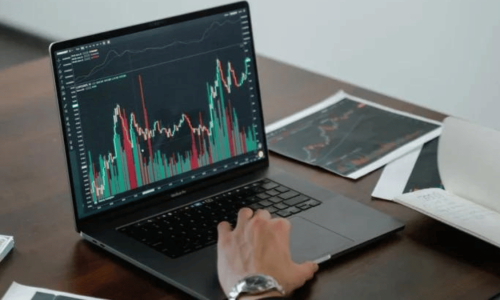Mixed Reality (MR) and Augmented Reality (AR) are changing the way we see the world. They mix our real world with computer graphics. Think of AR as adding digital images to what you see around you. For example, with AR, you can see how new shoes would look on your feet using just your phone. MR goes a bit further. It lets you interact with these digital images as if they were real objects in your room.
These technologies are different from Virtual Reality (VR), which takes you to a fully digital world. In this article, we’ll explain how MR adds to AR. We will talk about what they are, how they are different, and why they are important. This guide is easy to understand. It’s for everyone who wants to know about how mixed reality enhances augmented reality. We’ll keep it simple and give you useful information. Let’s get started.
Related Post: How Does the Development of Technology Positively Affect Our Wellness?
Table of Contents
ToggleBasics of Mixed Reality and Augmented Reality
Mixed Reality (MR) and Augmented Reality (AR) are technologies that add digital elements to our real world. AR uses devices like smartphones or special glasses to overlay digital images onto the real world. For instance, using an app to see how a new chair would look in your living room is an example of AR.
MR takes this a step further by allowing you to interact with these digital images. Imagine wearing a headset where you can reach out and move a digital ball around in your room. This is what MR offers – a more interactive experience.
Both MR and AR use cameras and sensors to understand your surroundings and then blend digital elements into them. The key difference lies in interaction. With AR, you mostly view these digital editions. With MR, you can engage with them, by touching or moving them.
These technologies are rapidly evolving and have practical applications in various fields. In gaming, they enhance the play experience. In education, they make learning more hands-on and immersive. For instance, medical students can use MR to practice surgeries without needing a real patient. In business, they assist in product design and training.
What Is Virtual Reality?
Virtual Reality (VR) is different from Augmented Reality (AR) and Mixed Reality (MR). In VR, you wear a special headset that covers your eyes. This headset shows you a world that is completely made by a computer. It’s like being inside a video game. When you use VR, you can’t see the room or place you are actually in. Everything around you is digital.
VR is mostly used for games. It’s also used for training, like teaching pilots how to fly planes. Sometimes, it’s used for virtual tours of places you can’t visit easily, like museums or faraway planets.
The main thing to remember about VR is that it takes you to a completely digital world. You don’t see any part of the real world when you’re using it. This is different from AR and MR, where digital things are added to your real surroundings. VR is about experiencing things that might be hard or impossible to do in real life. It’s a full escape into a digital world. Next, we’ll go back to talking more about Augmented Reality and how it adds to our real world.
What is Augmented Reality?
Augmented Reality (AR) blends digital information with the real world. It’s different from Virtual Reality (VR) because it doesn’t create a completely digital environment. Instead, AR adds digital elements to our actual surroundings. For instance, if you use AR through your smartphone or special glasses, you might see digital objects like a sofa or a pet appearing in your room, right on your phone’s screen. It’s like mixing digital creations into what you see around you.
AR is popular in many areas. In games, it brings fun digital aspects into real-world settings, like catching digital creatures in your neighborhood. For shopping, it helps you visualize how a new piece of furniture would look in your home. In education, it allows students to interact with 3D models of historical artifacts or scientific diagrams right in their classroom. By combining the digital and the real, AR creates more engaging and interactive experiences. It’s a growing technology that’s changing how we play, learn, and shop. Next, we’ll delve into how Virtual Reality and Augmented Reality are different from each other.
Virtual Reality and Augmented Reality: Know the Difference
Virtual reality (VR) and augmented reality (AR) are both exciting technologies, but they are quite different from each other. Understanding these differences is key to knowing how they can be used.
Virtual Reality (VR):
VR takes you to a fully digital world.
When using VR, you wear a headset that covers your eyes and often your ears, blocking out the real world.
It’s used for games, simulations, and experiences you can’t easily have in real life, like flying in space.
VR is great for when you want to completely escape into a different world.
Augmented Reality (AR):
AR mixes digital images with the real world.
You use your phone or special glasses to see these digital editions.
AR is not about escaping reality but about adding to it.
It’s used in games, education, and shopping, letting you see and interact with digital items in your actual environment.
The main difference is how they use your surroundings. VR takes you away from your real surroundings, while AR brings digital elements into them. VR is for when you want a completely new experience. AR is more for when you want to enhance the real world with digital details. Both have their unique uses and are important in today’s technology. Next, we’ll look at how Mixed Reality expands on what augmented Reality offers.
How does mixed reality expand augmented reality?
Mixed reality (MR) takes augmented reality (AR) to the next level. While AR adds digital images to your real-world view, MR lets you interact with these images in a more advanced way. Here’s how MR expands AR:
Interaction with Digital Objects:
In MR, you can interact with digital objects like they are real. For example, you can move a digital chair around your room to see where it fits best.
This makes ME more immersive than AR. You’re not just seeing digital things; you’re also touching and moving them.
Combining the Real and Digital Worlds:
MR blends the real and digital worlds more closely. It uses advanced technology to understand your environment.
This means digital objects in MR can react to the real world. If there’s a real table, a digital ball can bounce off it.
More Realistic Experiences:
MR can create experiences that feel more real. This is because of how well it mixes digital and real elements.
For example, in an MR game, a dragon might sit on your actual couch, reacting as you move around it.
Uses in Various Fields:
MR is not just for games. It’s used in education, medicine, and business.
Doctors can practice surgeries with MR models, and students can learn about history by interacting with 3D historical figures.
MR expands AR by adding depth to the interaction between the digital and real worlds. It offers a more engaging experience where digital objects aren’t just seen but also felt and manipulated in real time. This makes ME an exciting step forward in technology. Next, we’ll explore why mixed Reality is particularly useful in various aspects of life and work.
How is Mixed Reality Used Today?
Mixed Reality (MR) is already making a big impact in various fields today. Here are some ways MR is being used:
In Education:
MR is changing the way students learn. For example, in a history class, students can explore ancient civilizations in 3D. They can walk around historical sites and interact with objects from that time.
In science classes, MR allows students to dissect digital models of animals or explore the solar system hands-on.
In Healthcare:
Doctors and medical students are using MR for training and planning surgeries. They can practice on 3D models, which reduces risks during actual surgeries.
MR is also used in therapy. For example, it helps people with phobias by gradually introducing them to their fears in a controlled, virtual environment.
In Business and Industry:
Companies use MR for designing and testing new products. They create 3D models of their designs and interact with them to spot any issues.
In real estate, agents use MR to show clients how homes could look after renovations or with different furniture.
In Entertainment and Gaming:
MR games are becoming popular. They offer a more immersive and interactive experience than traditional video games.
Theme parks are using MR to create new kinds of rides and attractions, mixing real-world environments with digital effects.
In everyday life:
Apps use MR to help with tasks like interior decorating or finding your way in a big building.
Museums use MR to bring exhibits to life, making learning more engaging and interactive.
MR’s use today shows its vast potential. It’s not just about technology; it’s about how it can improve our daily lives, jobs, and leisure activities. By blending the real and the digital, MR is opening doors to new experiences and ways of doing things. Next, we’ll wrap up our discussion with some final thoughts on the future of MR and AR.
Conclusion
Mixed Reality (MR) and Augmented Reality (AR) are already changing how we learn, work, and play. These technologies make our interactions with the world more interactive and engaging. In education, they bring lessons to life. In healthcare, they provide new ways for doctors to train and plan surgeries. In businesses, they help in designing products and visualizing projects.
As technology improves, MR and AR will become even more realistic and widespread. This means they will be a part of everyday life for more people. However, with these advances come challenges like privacy and security. It’s important to address these as MR and AR grow.
In short, MR and AR are not just cool tech trends. They are tools that are reshaping our world. They offer new ways to experience, learn, and solve problems. The future with MR and AR is full of possibilities, and it’s exciting to think about what’s next.










